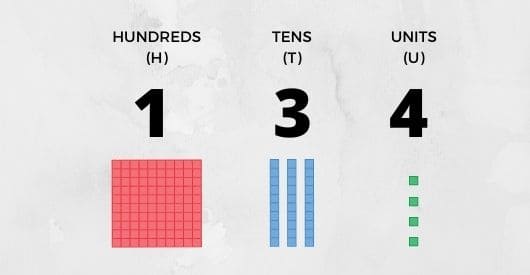
How do you get better maths results?
Maths is often a tricky subject, because most students don't understand the language of numbers. They aren't taught what each number means, and the relationship of each number to another.
The abstract applications of numbers, including formulas and equations are often taught first, creating a narrow understanding of numbers and the student begins to only recognise and know what to do when they see a particular format.
That's why most students struggle with word problems. If the numbers are taken off the page, and put into a real life context, does the student know what to do? Do they multiply or divide a number? Add it or subtract it? Or do they follow the Pythagoras theorem to work out the correct answer?
How do you make maths easy to understand?
There are a few main factors that make maths, or any subject for that matter, much easier for students to understand. As teachers, it becomes a struggle to teach bored or unwilling students, especially when they start "hating maths."
There are two main ways to teach maths in a more effective manner:
1. Maths must be taught by following an evidence-based, research-proven methodology and a mastery-based approach. Similar to the Multisensory Structured Language (MSL) method of teaching language, maths must also be taught as a language using a specific and structured approach. By teaching maths in a step-by-step, systematic approach, your student will be able to learn a concept and build on their understanding. The current system that is used in Australian schools is a called a "spiral approach" where concepts such as addition, multiplication, fractions and algebra are briefly touched on all throughout the school year.
Classes are often full and teachers don't have enough time to thoroughly explain each concept to the student individually, (let alone ensure each child has understood the instruction given). When class in finished, the opportunity to learn is lost. In the next lesson, another concept is introduced, everyone moves on.....and anxiety levels increase as the gap in understanding widens.
For students who are embarrassed to put their hand up and speak out, most of their incompetence is not discovered until much later. Then, going back and reviewing all the old concepts from the beginning is often a struggle as un-learning is also needed. It is much more effective to teach in a sequential and systematic way, so students really understand what is being taught from the get-go.
2. Maths must be taught using hands-on and tactile tools, in order for the student to fully understand each concept. Research showing that different parts of the brain light up and is much more engaged when knowledge is linked to a sensory experience, such as touching and feeling manipulative blocks. Understanding and retention of maths concepts increase dramatically for your student, and this will be shown through your student achieving better maths results.
Why is it important to use hands-on tools to teach maths?
Hands-on and tactile maths instruction creates a strong foundation of knowledge for each student, that supports understanding and better maths results - in classroom engagement; in maths exams; in everyday life such as shopping and weekly budgets; and in study options, job opportunities and future careers.
By using accurate and specific hands-on tools to introduce numbers, your student becomes much more proficient when using maths. Concepts become much easier to explain to the student with these tools. Research confirms the importance of using the same manipulative for an extended period of time (3 years minimum). That way, the student can become familiar with their tools of trade rather than having to learn the new tool each time a new maths concept is introduced.
For example, most students struggle with the concept of Place Value. If a number such as 134 is spoken, most students either confuse the number itself (and write it as 10034 or 100304) and when asked "how many hundreds are there?" they get stuck.

This concept, if not taught properly, will continue to hinder the student even through high-school. By showing the difference of the colour, shape and size of numbers using the blocks (as pictured above), suddenly it becomes much easier to understand for the student. That lightbulb "aha" moment shows up and students are excited!
There are a few more important pieces to consider when teaching your student using a mastery-based approach. Even incorporating just one of these components into your maths lessons will bring significant results for your students.
Here are the 7 essential, non-negotiable components that will increase your student's maths results:
7 Essential, Non-Negotiable Components
to Get Better Maths Results
1. Test your student's current understanding
The first thing to do before jumping on the train is to make sure you're boarding at the right station. If your student doesn't understand basic Place Value and addition, you'll need to master that concept first before moving forward. To find out your student's current maths understanding, you can take our free online diagnostic test here.
2. Teach using explicit instruction
Showing the student by clearly explaining each step along the way what you are doing, why and how you are using any particular maths function, is the best way to engage a student.
Explicit means that each lesson and concept introduced is "stated clearly and in detail, leaving no room for confusion or doubt." This means that each step must be broken down into small, manageable chunks.
Join us for our online and in-person Teacher Trainings to learn how to teach maths using a specific, step-by-step explicit approach.
3. Introduce each subject using a systematic approach
Moving systematically through each subject and completing the subject properly before moving onto the next is a key component that is sorely missed in old, conventional ways of teaching. The "spiral approach" that is often taught in schools across Australia teaches a "little bit here and there" of each concept of addition, subtraction, multiplication, division all the way to advanced maths in a sporadic way. That makes it hard for a student to master the topic when they are continually moving onto another concepts before mastering the current one.
Professor Dianne Siemon explains the progression of numbers in a student's learning and education. By beginning with Place Value, then progressing through counting, addition, subtraction, multiplication and division, the student follows a systematic approach that is much easier to comprehend. Once whole numbers are mastered, only then the student should move on to fractions, decimals, percents and beyond.
4. Make time for cumulative review
Cumulative review for procedural knowledge involves carefully adding to what students have previously learnt. During a cumulative review, students might describe how their experiences since the initial presentation have augmented their skill in this area. This helps the teacher identify what the student has learnt and where there is room for further study and improvement.
You can check out how the “Math U See” program incorporates this seamlessly into every lesson.
5. Use hands-on tools to demonstrate concepts
By using hands-on tools to teach each maths concept (or any subject for that matter), you create a tactile experience for your student of numbers. As explained above, hands-on tools are the most important tool for learning maths. It incorporates all learning styles, creating a tactile, sensory experience of numbers that cannot be obtained any other way.
Your student is able to see, feel, touch and understand numbers in a foundational way. This is key for ongoing knowledge, understanding and use of maths in their education. Using hands-on manipulatives also increases confidence and gets better maths results!
6. Allow time for student-paced learning
By allowing the student to move at their own pace, you follow a mastery-based approach. There’s absolutely no value in pushing forward to fulfil “what was supposed to be taught each lesson” if your student is walking away confused and struggling. Remember, we are impacting the next generation and their life experience – it’s important to give them the understanding and confidence they need to succeed.
7. Evaluate your student’s progress using a strong testing pathway
This last and final component is often referred to as the “testing pathway.” It means, after you’ve taught the student with hands-on tools at their own pace, you have a final test that confirms their understanding of the subject. This final step is also important for reporting purposes, whether as a teacher or tutor, and helps you plan the next lesson for your student.

Using these 7 principles are much easier on you as the teacher
You don't have to stress about remembering what to teach your students - or wonder if they'll actually understand the concept that's being taught. By using these research-proven methodologies to teach, you'll get much better maths results with your students.
It means you have a tried and tested way to support your students through their learning journey.
Looking for extra support and training?
We know how much pressure it can be to teach a room full of school kids and to explain everything in a way they all understand. We provide a K-12 Maths Program that incorporates key research-based recommendations, as well as offering online Teacher Trainings so you have extra support, clear guidance and step-by-step “how to” practice and guides in teaching maths. In learning with us, you will incorporate all 7 Components of Maths Mastery into your practice, to be the absolute best maths teacher that you can be.
Many teachers are raving about the Teacher Trainings and they've all come away with pivotal maths teaching knowledge to support their students. Plus, you receive a certificate of completed PD hours so you can tick off your yearly PD requirements.
Interested in joining us? You can check out our upcoming Teacher Trainings here.
Let us know what are the best tips you have from teaching your students in the comments below,
Good luck teaching!
The Team at Maths Australia
